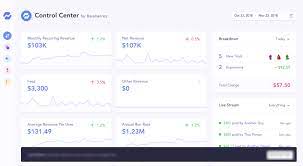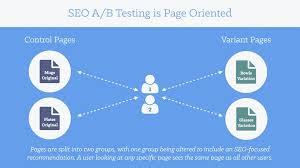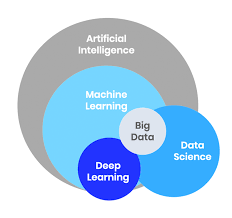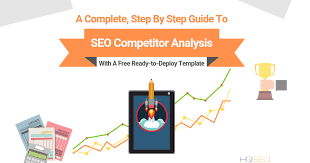Top Analytics Tools for Businesses in 2023
In today’s data-driven world, businesses rely heavily on analytics tools to make informed decisions, optimise operations, and enhance customer experiences. With a plethora of options available, choosing the right analytics tool can be daunting. This article explores some of the best analytics tools available in 2023 that can help businesses gain valuable insights and drive growth.
Google Analytics
Google Analytics remains one of the most popular and widely used web analytics tools. It offers comprehensive insights into website traffic, user behaviour, and conversion rates. With its robust set of features, including real-time data tracking and custom reporting, Google Analytics is ideal for businesses looking to understand their online presence better.
Tableau
Tableau is a leading data visualisation tool that helps businesses transform raw data into interactive and shareable dashboards. Its intuitive interface allows users to create stunning visualisations without extensive technical knowledge. Tableau supports integration with various data sources, making it a versatile choice for organisations across different industries.
Microsoft Power BI
Microsoft Power BI is a powerful business analytics service that provides interactive visualisations and business intelligence capabilities with an easy-to-use interface. It enables users to create reports and dashboards that offer deep insights into business performance. Power BI seamlessly integrates with other Microsoft products, making it an excellent choice for companies already using Microsoft ecosystems.
Adobe Analytics
Adobe Analytics, part of the Adobe Experience Cloud suite, offers advanced analytics capabilities tailored for marketers and analysts. It provides real-time insights into customer interactions across various channels, helping businesses personalise customer experiences effectively. With features like predictive analytics and AI-driven insights, Adobe Analytics is ideal for enterprises seeking sophisticated data analysis solutions.
Looker
Looker, now part of Google Cloud Platform, is a modern data platform that simplifies complex data analysis processes. It empowers teams to explore, analyse, and share real-time business insights effortlessly. Looker’s unique modelling language allows users to define metrics consistently across the organisation, ensuring everyone works from a single source of truth.
Mixpanel
Mixpanel focuses on product analytics by providing detailed information about user interactions within applications or websites. It’s particularly useful for SaaS companies looking to improve user engagement and retention rates through in-depth funnel analysis and cohort tracking.
The Bottom Line
Selecting the right analytics tool depends on your specific business needs and objectives. Whether you’re aiming to enhance website performance or gain deeper insights into customer behaviour using AI technologies like predictive analysis or machine learning models – there’s an appropriate solution out there waiting just around every corner!
Top 7 Benefits of Leading Analytics Tools: Driving Business Success Through Data-Driven Insights
- Gain valuable insights into customer behaviour and preferences.
- Track and measure key performance indicators to monitor business growth.
- Visualise complex data in interactive dashboards for easy interpretation.
- Identify trends and patterns to make informed strategic decisions.
- Improve operational efficiency by streamlining processes based on data-driven insights.
- Enhance marketing campaigns through targeted audience segmentation and analysis.
- Enable real-time monitoring of website traffic and user interactions for timely adjustments.
Challenges of Top Analytics Tools: Navigating Complexity, Cost, and Learning Curve
Gain valuable insights into customer behaviour and preferences.
One of the key advantages of using the best analytics tools is the ability to gain valuable insights into customer behaviour and preferences. By analysing data related to customer interactions, purchasing patterns, and engagement metrics, businesses can better understand their target audience. This deeper understanding enables companies to tailor their products, services, and marketing strategies to meet customer needs effectively. By leveraging these insights, businesses can enhance customer experiences, increase satisfaction levels, and ultimately drive growth and loyalty within their customer base.
Track and measure key performance indicators to monitor business growth.
One significant advantage of using the best analytics tools is the ability to track and measure key performance indicators (KPIs) to monitor business growth effectively. By leveraging these tools, businesses can gain valuable insights into various aspects of their operations, such as sales performance, customer engagement, and marketing effectiveness. Tracking KPIs allows organisations to identify trends, spot areas for improvement, and make data-driven decisions that drive sustainable growth and success. With real-time data analysis and custom reporting features offered by top analytics tools, businesses can stay agile and responsive to market changes, ultimately enhancing their overall performance and competitiveness.
Visualise complex data in interactive dashboards for easy interpretation.
One of the key advantages of the best analytics tools is their ability to visualise complex data in interactive dashboards, making it easier for users to interpret and understand information effectively. By presenting data in visually appealing formats such as graphs, charts, and heat maps, these tools enable businesses to identify trends, patterns, and correlations at a glance. This visual representation not only simplifies the communication of insights but also empowers decision-makers to make informed choices based on a clear understanding of the data presented.
Identify trends and patterns to make informed strategic decisions.
One key benefit of using the best analytics tools is the ability to identify trends and patterns within vast datasets, enabling businesses to make informed strategic decisions. By analysing historical data and real-time information, these tools can uncover valuable insights that may not be apparent through manual analysis alone. Recognising trends and patterns allows organisations to anticipate market shifts, customer preferences, and operational efficiencies, empowering them to proactively adjust strategies and stay ahead of the competition. Ultimately, leveraging analytics tools for trend analysis helps businesses make smarter decisions that drive growth and success in an ever-evolving business landscape.
Improve operational efficiency by streamlining processes based on data-driven insights.
One of the key benefits of using the best analytics tools is the ability to improve operational efficiency by streamlining processes based on data-driven insights. By analysing data collected from various sources, businesses can identify inefficiencies, bottlenecks, and areas for improvement within their operations. This allows them to make informed decisions and implement targeted strategies that optimise workflows, reduce costs, and enhance overall productivity. Utilising analytics tools enables organisations to operate more efficiently and effectively by leveraging data to drive continuous improvement and innovation in their processes.
Enhance marketing campaigns through targeted audience segmentation and analysis.
One significant advantage of using the best analytics tools is the ability to enhance marketing campaigns through targeted audience segmentation and analysis. By leveraging advanced analytics capabilities, businesses can dissect their customer base into specific segments based on demographics, behaviour, and preferences. This detailed segmentation allows marketers to tailor their messaging and offerings to resonate with each audience segment effectively, increasing the likelihood of engagement and conversion. Furthermore, analysing the performance of these segmented campaigns provides valuable insights that can be used to refine future marketing strategies for even greater success.
Enable real-time monitoring of website traffic and user interactions for timely adjustments.
One of the key advantages of using the best analytics tools is their ability to enable real-time monitoring of website traffic and user interactions. This feature allows businesses to track and analyse user behaviour as it happens, providing valuable insights into how visitors engage with their website. By having access to up-to-the-minute data, businesses can make timely adjustments to their online strategies, such as tweaking content, improving user experience, or launching targeted marketing campaigns. This proactive approach helps businesses stay agile and responsive in meeting the evolving needs of their audience, ultimately leading to improved performance and better outcomes.
Steep Learning Curve
One significant drawback of some of the best analytics tools is the steep learning curve they present. Mastering these tools to unlock their full potential can be time-consuming and demanding, requiring users to invest significant effort in training and skill development. The complexity of features and functionalities within these tools may deter users who are looking for quick and easy solutions, making it challenging for businesses to fully leverage the benefits of advanced analytics without a substantial investment in learning and adaptation.
Costly Licenses
One significant drawback of the best analytics tools is the costly licenses they typically require. Many top-tier analytics platforms come with premium pricing models, making them expensive investments that may not be feasible for small businesses or startups operating on limited budgets. The high costs associated with these tools can act as a barrier to entry, preventing smaller organisations from accessing advanced analytics capabilities and hindering their ability to leverage data-driven insights to drive growth and innovation.
Complex Implementation
One significant drawback of utilising the best analytics tools is the complexity of implementation. Integrating advanced analytics tools into existing systems can prove to be a challenging and time-consuming task, often necessitating specialised IT expertise. The process of seamlessly blending these tools with current infrastructure may require extensive planning, configuration, and troubleshooting, which could lead to delays in deployment and increased resource allocation. Additionally, ensuring compatibility and data consistency across different platforms can further complicate the implementation process, posing a barrier for businesses seeking to leverage the full potential of analytics tools effectively.





